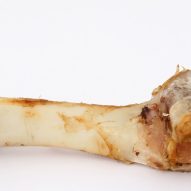New Years Resolutions for You and Your Cat | Dr. Justine Lee, DACVECC, DABT, Board-certified Veterinary Specialist
New Years Resolutions for You and Your Cat As the New Year approaches, it’s a great opportunity to get a fresh start on everything. After all, it’s our “one” time of the year when we can recommit to our goals. So, as a veterinarian, I want to be able to provide you some resolutions that will help you and your feline friends live a longer and healthier life. After all, we know that sharing a household with a cat (or two!) can help keep depression, heart disease, and hypertension at bay....
Read MoreFDA recall on dog bone treats! | Dr. Justine Lee, DACVECC, DABT, Board-Certified Veterinary Specialist
Important information from the Food & Drug Administration below! https://www.fda.gov/ForConsumers/ConsumerUpdates/ucm208365.htm Please help spread the word to your dog-owning friends and colleagues! Thanks and keep your dog healthy and safe! No Bones (or Bone Treats) About It: Reasons Not to Give Your Dog Bones Bone treats are real bones that have been processed, sometimes flavored, and packaged for dogs. Giving your dog a “bone treat” might lead to an unexpected trip...
Read MoreHemangiosarcoma, the deadly cancer in dogs | Dr. Justine Lee, DAVECC, DABT, Board-certified Veterinary Specialist
If your dog was just diagnosed with hemangiosarcoma, here’s what you need to know. As an emergency critical care veterinary specialist, this is my most hated type of cancer in dogs (and rarely, cats). That’s because it comes on suddenly, and results in internal bleeding. It’s so devastating to pet owners, as they think their dog is fine one day, and then ends up being diagnosed with cancer in the ER based on one day of sudden clinical signs. So, what do you need to...
Read MoreMy dog was diagnosed with laryngeal paralysis | Dr. Justine Lee, DACVECC, DABT, Board-certified Veterinary Specialist
Was your dog just diagnosed with laryngeal paralysis? Here’s what you need to know! The larynx, otherwise known as the voice box, is made up of cartilage and works by allowing air to flow directly into the lungs. Muscles, nerves, and blood vessels surround the larynx. During breathing, the two halves of the cartilage should abduct (or pull open) to allow a large opening into the trachea to allow air to enter into the lungs. During swallowing, special tissue (e.g., the epiglottis) covers...
Read MoreFood bloat in dogs | Dr. Justine Lee, DACVECC, DABT, Board-certified Veterinary Specialist
In today’s blog, I review food bloat – when a dog eats so much and their stomach is full of food. Is this life-threatening? Do you have to take your dog to the veterinarian if your dog has food bloat? Food bloat, also commonly called “bloat” or “gluttony bloat,” occurs when a dog (or rarely, a cat) gorges on a massive amount of food, resulting in too much air and food in the stomach. Semantically, food bloat is similar to “gastric dilatation” as it means the stomach is...
Read More




Recent Comments